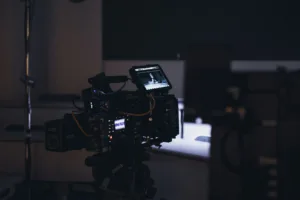
Ah, the 180 degree rule – one of the fundamental rules of filmmaking! If you’re new to filmmaking, you may be wondering what exactly this rule is and why it’s so important. Don’t worry, we’ve got you covered. In this blog, we’ll explain what the 180 degree rule is and give you some tips on how to use it effectively.
So, what exactly is the 180 degree rule? In simple terms, it’s a rule that dictates that when filming a conversation between two characters, the camera should stay on one side of an imaginary line drawn between them. This helps maintain spatial continuity and keeps the audience from getting disoriented. If you cross the line, the characters will appear to switch positions on screen, which can be confusing for the viewer.
For example, imagine you’re filming a conversation between two characters sitting across from each other at a table. You would draw an imaginary line between them and make sure that the camera stays on one side of that line throughout the scene. If you need to show the other side of the table, you would move the camera to the other side and stay on that side for the rest of the scene.
Now, you may be wondering why the 180 degree rule is so important. Well, it’s all about maintaining spatial continuity and keeping the audience engaged in the story. If you cross the line, it can be disorienting for the viewer and take them out of the story. By following the 180 degree rule, you can ensure that your film is easy to follow and keeps the audience engaged.
So, how do you use the 180 degree rule effectively? Here are a few tips:
As with any aspect of filmmaking, planning ahead is key to using the 180 degree rule effectively. Make sure you have a clear idea of the scene you want to film and draw an imaginary line between the characters before you start shooting.
Sound effects and foley are crucial to creating a realistic and immersive sound design. Think about all the sounds you hear in your everyday life – footsteps, doors opening and closing, the hum of an air conditioner – and try to recreate them in your film. This will help bring your audience into the world of your film and make them feel like they’re a part of it.
As with any rule in filmmaking, it’s okay to break the 180 degree rule – as long as you do it intentionally. Breaking the rule can create tension and disorientation, which can be effective in certain scenes. Just make sure that the break is intentional and serves a purpose in the story.
By following these tips, you can use the 180 degree rule effectively and create engaging and immersive films. So go forth and start filming – the world of filmmaking is waiting for you!